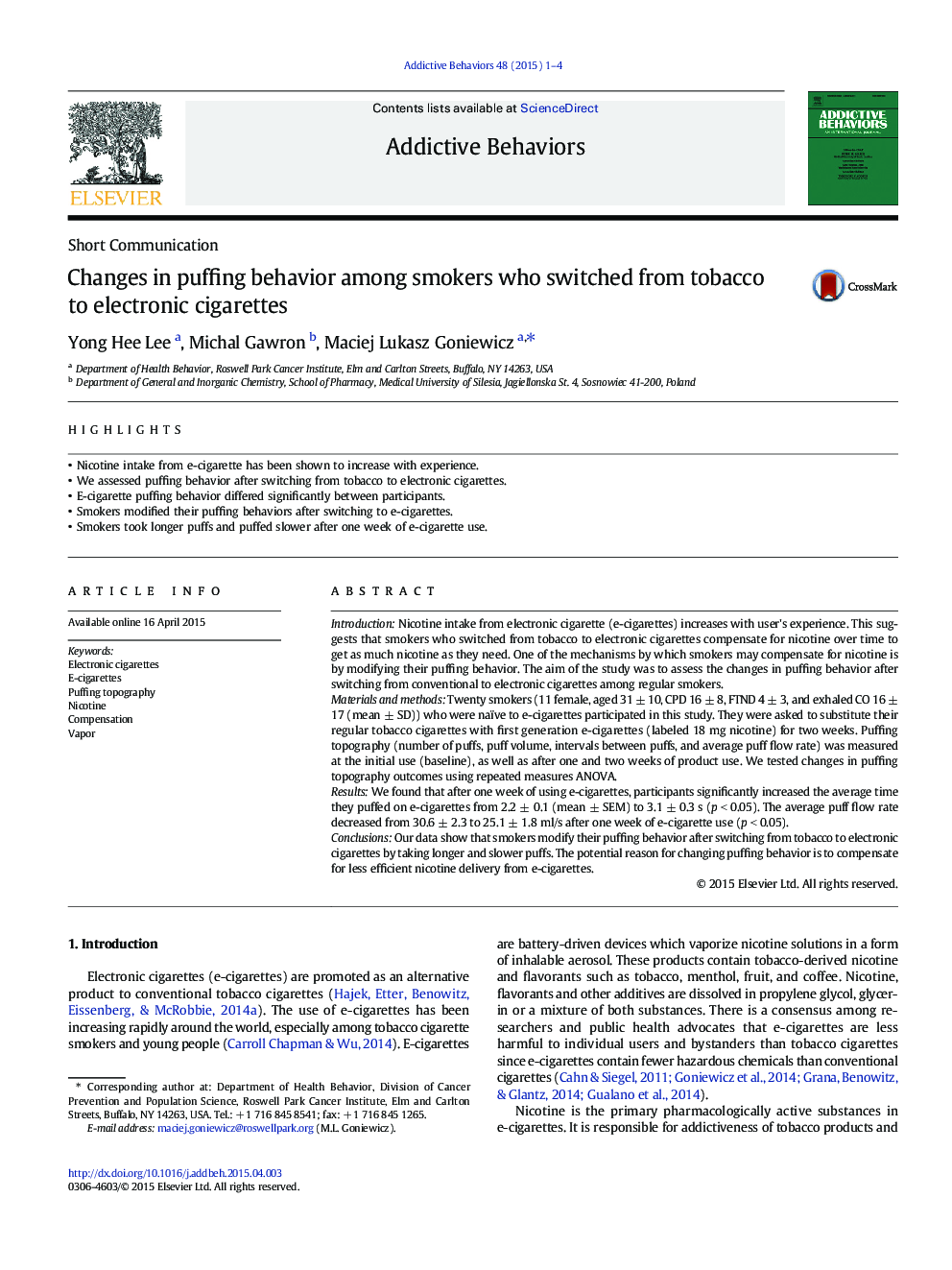| Article ID | Journal | Published Year | Pages | File Type |
|---|---|---|---|---|
| 898679 | Addictive Behaviors | 2015 | 4 Pages |
•Nicotine intake from e-cigarette has been shown to increase with experience.•We assessed puffing behavior after switching from tobacco to electronic cigarettes.•E-cigarette puffing behavior differed significantly between participants.•Smokers modified their puffing behaviors after switching to e-cigarettes.•Smokers took longer puffs and puffed slower after one week of e-cigarette use.
IntroductionNicotine intake from electronic cigarette (e-cigarettes) increases with user's experience. This suggests that smokers who switched from tobacco to electronic cigarettes compensate for nicotine over time to get as much nicotine as they need. One of the mechanisms by which smokers may compensate for nicotine is by modifying their puffing behavior. The aim of the study was to assess the changes in puffing behavior after switching from conventional to electronic cigarettes among regular smokers.Materials and methodsTwenty smokers (11 female, aged 31 ± 10, CPD 16 ± 8, FTND 4 ± 3, and exhaled CO 16 ± 17 (mean ± SD)) who were naïve to e-cigarettes participated in this study. They were asked to substitute their regular tobacco cigarettes with first generation e-cigarettes (labeled 18 mg nicotine) for two weeks. Puffing topography (number of puffs, puff volume, intervals between puffs, and average puff flow rate) was measured at the initial use (baseline), as well as after one and two weeks of product use. We tested changes in puffing topography outcomes using repeated measures ANOVA.ResultsWe found that after one week of using e-cigarettes, participants significantly increased the average time they puffed on e-cigarettes from 2.2 ± 0.1 (mean ± SEM) to 3.1 ± 0.3 s (p < 0.05). The average puff flow rate decreased from 30.6 ± 2.3 to 25.1 ± 1.8 ml/s after one week of e-cigarette use (p < 0.05).ConclusionsOur data show that smokers modify their puffing behavior after switching from tobacco to electronic cigarettes by taking longer and slower puffs. The potential reason for changing puffing behavior is to compensate for less efficient nicotine delivery from e-cigarettes.
